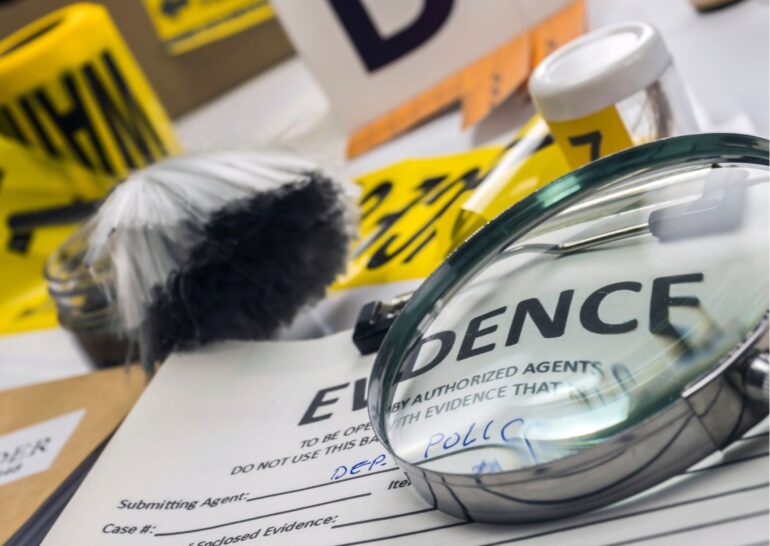TL;DR:
- AI revolutionizes forensic psychology in criminal profiling.
- Traditional methods involve manual analysis and collaboration with law enforcement.
- AI-driven quantitative profile-profile relationship (QPPR) modeling expedites evidence gathering.
- Dr. Leon Barrona highlights the promise of AI in forensic science.
- Five key areas where AI transforms forensic psychology are facial recognition, predictive policing, text analysis, lie detection, and behavior profiling.
Main AI News:
In the realm of law enforcement, the fusion of artificial intelligence (AI) and forensic psychology is reshaping the landscape of criminal profiling. When a crime unfolds, the quest for justice demands a profound understanding of the psychological facets, behavioral tendencies, historical context, and a trove of data pertaining to the perpetrators. Historically, traditional forensic psychology played an indispensable role by crafting potential profiles of wrongdoers based on evidence gleaned from crime scenes, a process that entailed manual labor enriched with the aid of keyword searches and pattern matching. However, the dawn of AI heralds a transformative era, as it automates information processing and augments the precision of law enforcement profiling.
Forensic Psychology Without AI: The Manual Era
The traditional modus operandi of forensic psychologists involves the application of psychological theories to dissect various aspects of criminality. Their aim is to fathom the intricate realms of offender psychology, backgrounds, motives, patterns, and the probability of recurring criminal acts. A typical day in the life of a forensic psychologist entails meticulous examination of offender details, collaboration with law enforcement agencies, information exchange, progress assessment in ongoing cases, and the provision of invaluable insights. Additionally, their duties encompass interviews with criminals, on-site visits to crime scenes, and active participation in the collection and scrutiny of evidence. Given the diverse nature and complexity of crimes, often spanning disparate geographic locations, law enforcement agencies often grapple with the challenge of expeditiously concluding cases.
Forensic Psychology with AI: A Paradigm Shift
To appreciate the seismic impact of AI in the realm of forensic psychology, let us delve into a real-world case study. A consortium of forensic scientists hailing from the Universities of Northumbria, King’s College London, University of Lausanne, and La Sapienza University of Rome have illuminated how AI can accelerate murder trials. A pivotal juncture in closing such cases hinges on producing admissible court evidence.
In the pre-AI era, law enforcement agencies laboriously reconstructed crime scenes to garner insights and assemble time-consuming evidence. Enter AI, with its cutting-edge quantitative profile-profile relationship (QPPR) modeling approach, capable of unraveling crime scenarios and extracting invaluable revelations. For instance, AI can discern the firearm type employed in a crime by scrutinizing spent bullet casings, traces of ammunition residue on the ground, gunshot wounds, and the hand used for firing the weapon.
Dr. Leon Barrona, a prominent figure in Analytical & Environmental Sciences at the Imperial College in London, underscores the transformative potential of machine learning: “Every forensic science case is a unique puzzle, replete with variables such as different times, locations, and scenarios. Our research demonstrates that, despite this complexity and the intricate nature of gunshot residue analysis, machine learning can ingeniously piece together this mosaic of information to ascertain the original ammunition used. The quantitative profile-profile relationship (QPPR) modeling promises a swift and accurate evidence-gathering process, furnishing law enforcement agencies with court-worthy evidence.”
5 Ways AI Catalyzes Forensic Psychology
- Facial Recognition: AI rapidly scans a vast repository of criminal images, enabling swift identification based on eyewitness descriptions.
- Predictive Policing: AI analyzes historical data to forecast crime-prone areas and times, empowering law enforcement to proactively allocate resources.
- Text and Language Analysis: AI scrutinizes text content, discerning language nuances, sentiment, handwriting, and linguistic patterns for insightful revelations.
- Lie Detection: AI-enhanced cameras detect deception during suspect interviews by analyzing facial expressions, color changes, and eye movements.
- Behavior Profiling: AI streamlines the creation of comprehensive behavior profiles by leveraging facial data, fingerprints, historical records, and behavioral patterns, revolutionizing investigative efficiency.
In the evolving landscape of criminal profiling, AI’s integration with forensic psychology empowers law enforcement agencies to pursue justice with unprecedented precision and swiftness. This potent alliance heralds a new era where technology and human expertise collaborate seamlessly to unravel the mysteries of criminality and ensure a safer society.
Conclusion:
The integration of AI into forensic psychology reshapes the landscape of criminal profiling, enabling law enforcement to enhance precision and efficiency in investigations. This technological advancement opens up opportunities for AI-driven solutions in the market, particularly in the fields of law enforcement and forensic science. Businesses specializing in AI-driven forensic tools and services are poised for growth as they cater to the evolving needs of law enforcement agencies.

